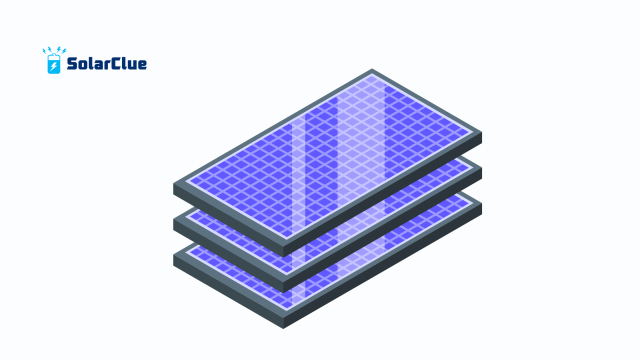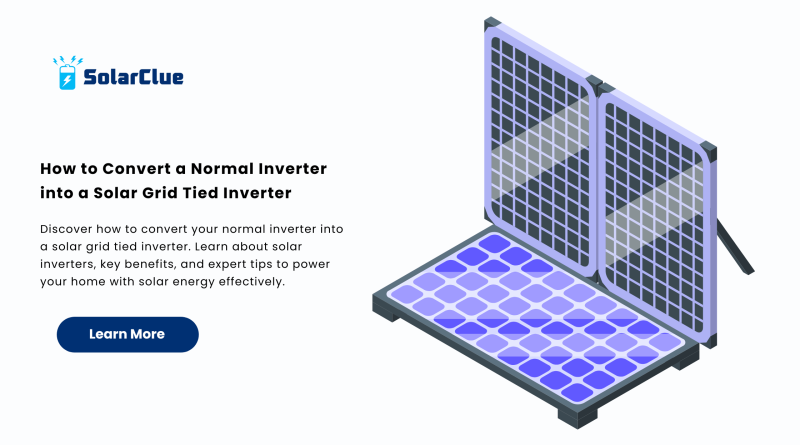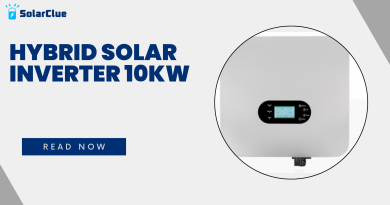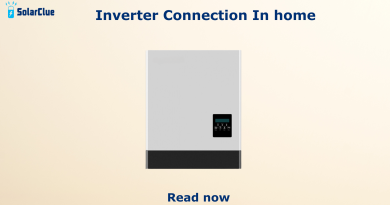How to Convert a Normal Inverter into a Solar Grid Tied Inverter
With the rising interest in sustainable energy, homeowners are actively seeking ways to reduce electricity bills and transition to renewable sources. One common question that arises is: Can I convert my normal inverter into a solar inverter? The answer is yes! In this comprehensive blog, we’ll walk you through everything you need to know about converting a normal inverter to solar inverter, with a strong focus on creating a grid tied solar kit.
Table of Contents
- 1 What is a Solar Inverter?
- 2 What is a Solar Power Inverter?
- 3 Why Convert a Normal Inverter to a Solar Inverter?
- 4 Components Needed for Conversion
- 5 Step-by-Step Guide: Converting to a Solar Inverter
- 6 How Solar Inverter Works
- 7 Pros and Cons of Conversion
- 8 Choosing the Right Solar Inverter for Home
- 9 Understanding Solar Inverter Price
- 10 Grid Tied Solar Kit: Is It Worth It?
- 11 Maintenance Tips
- 12 Common Mistakes to Avoid
- 13 Real-Life Case Study
- 14 Final Thoughts
- 15 FAQs
What is a Solar Inverter?
A solar inverter is a key component of any solar power system. It converts the DC (Direct Current) electricity generated by your solar panels into AC (Alternating Current) power, which is usable by most household appliances. Simply put, it’s the brain of your solar setup.
What is a Solar Power Inverter?
Many people ask, what is a solar power inverter? It is essentially the same as a solar inverter, with the added function of managing energy storage (if you have a battery backup) and feeding excess energy back into the grid in case of a grid-tied setup.
Why Convert a Normal Inverter to a Solar Inverter?
If you already own an inverter for power backup, converting it into a solar inverter for home use can be a cost-effective step toward embracing solar energy. The benefits include:
- Reduced electricity bills
- Efficient energy use
- Lower carbon footprint
- Smart utilization of existing infrastructure
Components Needed for Conversion
Before diving into the how-to, let’s look at what you’ll need to convert your normal inverter:
- Solar charge controller (preferably MPPT type)
- Solar panels with adequate wattage
- DC isolator for safety
- MC4 connectors and cables
- Grid tie inverter (optional if you’re going full grid-tied)
Step-by-Step Guide: Converting to a Solar Inverter
1. Assess Your Inverter
Start by checking if your existing inverter is solar-compatible. Some inverters are hybrid-ready, which means they already support solar integration.
2. Add a Solar Charge Controller
Install an MPPT (Maximum Power Point Tracking) solar charge controller between your solar panels and the inverter battery. This ensures efficient charging and prevents overcharging or damage.
3. Connect Solar Panels
Install and connect the solar panels to the charge controller. Make sure the panel wattage and voltage are within the safe range for your battery bank and inverter.
4. Battery Configuration
Use deep-cycle solar batteries if your inverter system isn’t already optimized for solar. This will enhance the lifespan and efficiency of the entire system.
5. Optional: Upgrade to a Grid Tied Inverter
If you aim to feed excess power back into the grid, upgrade to a grid tied inverter. This allows net metering and further savings.
How Solar Inverter Works

Understanding how solar inverter works helps in making informed decisions. The inverter takes the DC power from the panels and intelligently converts it to AC. In a grid tied solar kit, it also monitors grid availability and syncs your supply with it.
Pros and Cons of Conversion
Pros:
- Cost-effective
- Utilizes existing setup
- Environmentally friendly
Cons:
- Limited efficiency compared to new solar inverters
- Manual intervention may be needed in some cases
Choosing the Right Solar Inverter for Home
When upgrading, make sure you choose the right solar inverter for home use. Features to consider include:
- MPPT support
- Grid-tie capability
- Battery compatibility
- Warranty and service availability
Understanding Solar Inverter Price
Solar inverter price can vary depending on brand, capacity, and features. On average:
- Basic models start at ₹5,000
- Advanced grid-tied inverters can go up to ₹50,000 or more
To explore affordable options, check out solarclue.com for competitive deals.
Grid Tied Solar Kit: Is It Worth It?
Yes, a grid tied solar kit is ideal for homes with high daytime electricity usage and consistent grid availability. It allows you to:
- Sell surplus energy back to the grid
- Reduce dependency on batteries
- Maximize solar energy utilization
Maintenance Tips
- Regularly clean your solar panels
- Check for corrosion or loose wires
- Monitor battery health
- Update firmware of your smart inverter (if available)
Common Mistakes to Avoid
- Using mismatched components
- Ignoring battery specifications
- Incorrect wiring
- Overloading the inverter
Real-Life Case Study
One homeowner in Pune converted a basic inverter into a solar-ready system using a 1kW solar panel setup and a hybrid charge controller. In six months, he reported a 35% drop in electricity bills and full ROI within two years.
Final Thoughts
Converting a normal inverter to solar inverter is not only practical but also eco-conscious. By understanding what is a solar inverter, how it works, and the benefits of a solar inverter for home, you can take a strong step toward energy independence.
For more expert insights, visit blog.solarclue.com and get empowered to make the solar switch.
FAQs
1. Can all inverters be converted to solar inverters?
Not all. Check compatibility or consult an expert to assess if your inverter supports solar integration.
2. How much does it cost to convert a normal inverter to a solar inverter?
Costs vary but expect an investment of ₹10,000–₹30,000 depending on the panel size and components.
3. Is it safe to DIY the conversion?
Yes, if you have basic electrical knowledge. Otherwise, hire a certified installer.
4. What is the difference between grid-tied and off-grid solar inverters?
Grid-tied systems feed excess power to the grid. Off-grid setups store power in batteries for independent use.
5. Will the solar inverter work during power cuts?
Only if it’s a hybrid or off-grid setup with battery backup.
Take the first step toward green living—explore solar solutions now at solarclue.com!




